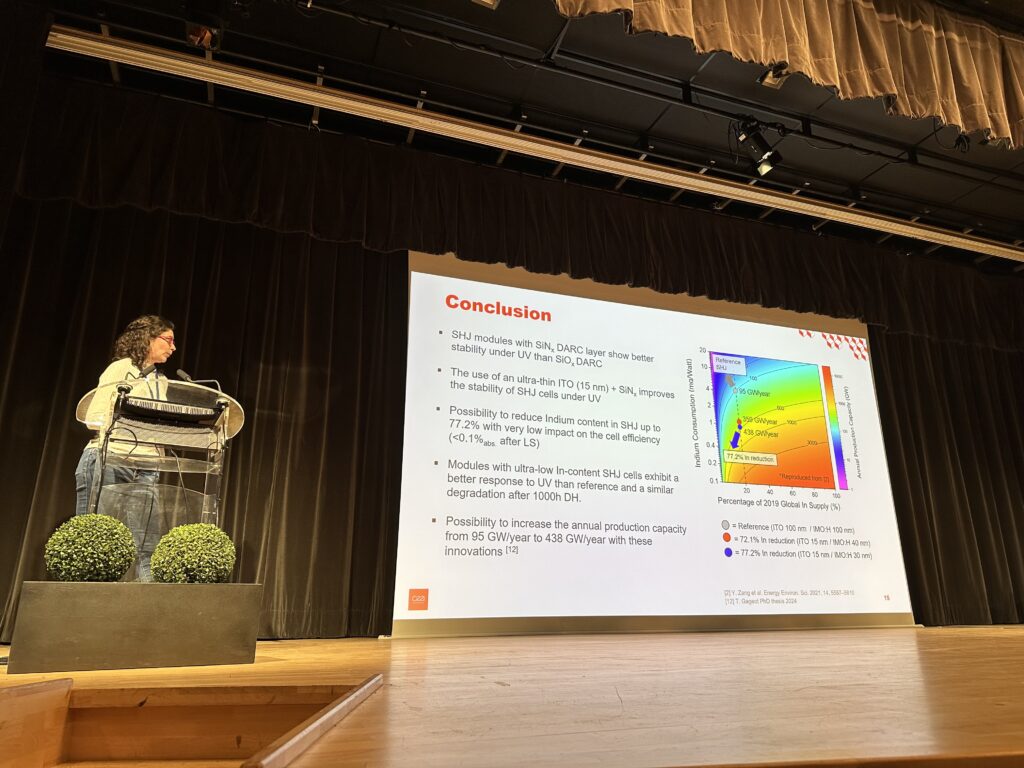CEA, partner of ReSilex, has recently presented a new study, connected to its activities in the ReSiLEX project. This work focuses on reducing In-based transparent conductive oxide (TCO) thicknesses to their minimum in SHJ solar cells with the goal to demonstrate the possibility of a drastic reduction of Indium consumption in the fabrication process.
On the front side, the reduction of the ITO thickness down to 15 nm implies to deposit an additional anti-reflective layer. Three anti-reflective dielectric layers have been studied (SiNx, SiOx and a bilayer SiNx/SiOx) in solar cell and module configurations to maximize the performances and evaluate the module stability under UV exposure. Lower Jsc losses after 120kWh of UV exposure are measured with the use of thinner ITO layers, in agreement with a lower spectral response deterioration in the IR range.
The use of SiNx dielectric results in the best performances after UV exposure without Voc and Jsc losses. Following further optimizations of the dielectrics and TCO, the 15 nm of ITO/SiNx option was combined with a thin IMO:H TCO on the rear side.
TCO thickness down to 30 nm were studied on the rear side resulting in overall Indium reduction of 77.2% with very limited efficiency loss at the cell level (below 0.1% absolute). The light-soaking response was then studied before starting the evaluation of the module reliability.
The full study will be soon made available in Open Access, check out this page in the following weeks
A moment of the Study presentation during the SiliconPV conference 2024


